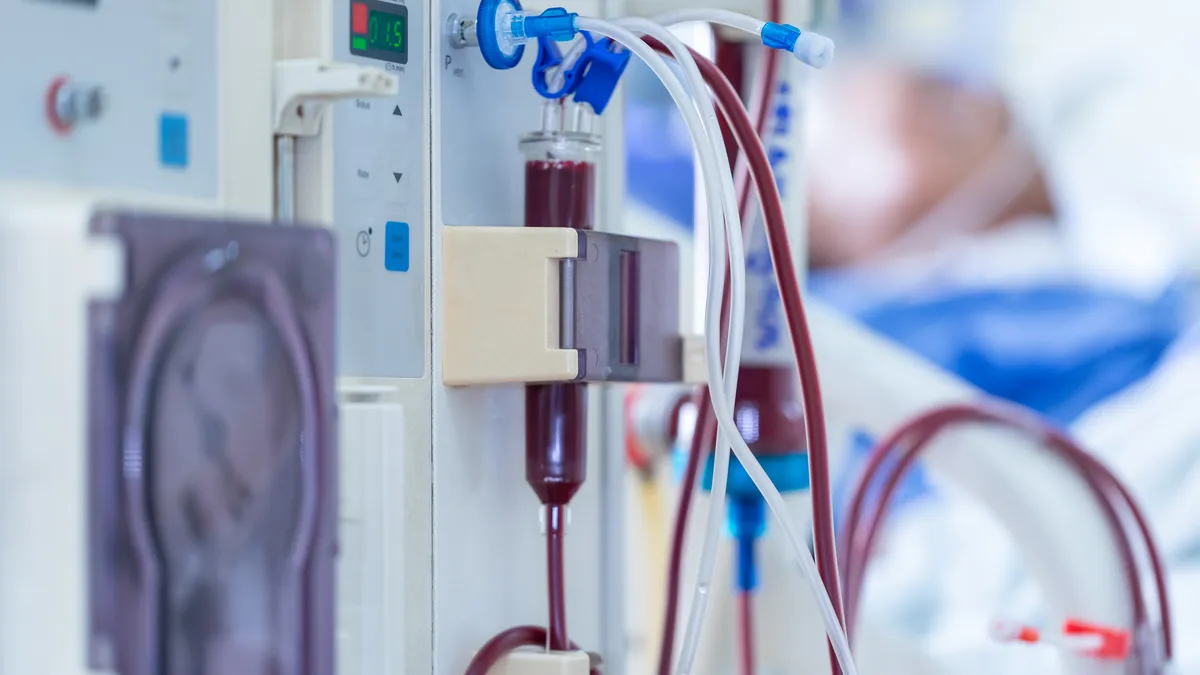UPDATE: Nov. 26, 2019: The European Council issued a second corrigendum Nov. 25 confirming manufacturers of certain lower risk medical devices will get additional time to comply with the MDR. The corrigendum gives some Class I devices — including certain reusable products like surgical instruments and endoscopes and certain software that's been moved into a higher risk class — a four-year transitional period until May 26, 2024, before they are required to meet the new regulation's standards.
Implementation of sweeping new rules overhauling how medical devices are regulated in the European Union is just six months away.
Industry has been arguing for more than a year that the system isn't yet ready to handle the onslaught of devices that must be reviewed under the Medical Device Regulation, particularly when the number of notified bodies designated to certify them is much lower than the 20 that the EC expected by year's end, with only seven available so far. The regulation is set to take effect May 2020.
"[D]espite the industry’s efforts to get ready, we remain seriously held back by the slow and piecemeal implementation of the new regulatory framework," MedTech Europe, which represents the EU medical device industry, said in a Nov. 26 statement.
The regulation is intended to increase the intensity of pre- and postmarket reviews and standardize rules for medical devices and diagnostics.
As the rollout approaches, here are four things to know about the state of play, including what parts of the regulation have been delayed, whether additional parts might be delayed, and where the capacity of notified bodies currently stands.
What parts of the new regs have already been delayed and are there more that could be?
The Commission has extended certain deadlines of late, including announcing a two-year delay in the "go live" date of Eudamed, the European Database on Medical Devices, a collection of information on devices sold in the European Union, until May 26, 2022.
Earlier this month, the EC also extended the deadline to apply to serve on expert panels. Under the forthcoming regulation, notified bodies must consult with the advisory panels before clearing certain high-risk devices for marketing in the region.
Manufacturers of certain lower-risk medical devices will likely get additional time to comply with the MDR after the European Council issued Nov. 25 a second corrigendum to amend or modify some parts of the regulation. The corrigendum gives some Class I devices — including certain reusable products like surgical instruments and endoscopes — a four-year transitional period before they are required to meet the new regulation's standards.
Marc Miller, an executive with TransPerfect Medical Device Solutions, a language services and content technology provider to the medical device industry, told the European Commission the device industry needs more time to prepare compliance updates and translate labeling into many languages.
Miller, who would like to see the law's labeling provisions delayed, told MedTech Dive the clinical data requirements and supply chain management provisions are also causing issues.
"I imagine there is some way to delay key aspects of the regulation if there is a public safety concern," Miller said.
Which players are pushing for a delay in the implementation date?
MedTech Europe and COCIR are among the groups that have reached out to express concerns about the system's readiness, impact on patient safety and access to medical devices, and the attractiveness of the EU to medical device makers. COCIR is the European Trade Association representing the medical imaging, radiotherapy, health ICT and electromedical industries.
"This is a critical period for the entire medical devices regulatory system," industry group COCIR said in recommendations made in June. "If the European Union’s ambition for medical devices are to be realised, the full regulatory framework will have to be in place and functioning. At this moment, it appears that much effort is needed to complete the framework in time."
MedTech Europe was similarly gloomy and warned delays in implementation make the European Union a less attractive region for investment by medical device manufacturers, and likely increase costs for hospitals and threaten patient access.
"[W]ithout immediate action by the European Commission, the new regulatory system will not be ready on time to ensure continued access of patients and healthcare systems to life-saving and life-transforming devices," Serge Bernasconi, MedTech Europe CEO said in an April letter to the Commission. "This set of circumstances will profoundly disrupt the medical technology internal market and create yet another significant 'Cliff Edge' putting patient safety, healthcare services and EU healthcare environment in a major disarray."
The U.S. delegation to the World Trade Organization in a statement this summer also urged a delay of three years in the implementation date to allow U.S. exporters to adapt to the new regulatory scheme.
And Transperfect exec Miller also reached out to the EC in recent weeks, urging them to consider a delay in the regulation's effective date to avoid an increase in patient safety risk due to labeling translation errors
Could the entire law be put on hold?
A wholesale extension would be extraordinarily difficult because the timeline for the regulation was set by the European Parliament and Council, established in the legislation itself. Thus, any change would require a completely new legislative procedure, including an impact assessment and then approval by both the Council and the Parliament.
Given the pace of rulemaking in the EU, such a reversal of course seems unlikely, according to experts.
"Although there is currently a great deal of discussion of the possibility that the European Commission could postpone entry into application of the MDR, there is no obvious legal basis" for doing so, Elisabethann Wright, an attorney with Hogan Lovells in Brussels told MedTech Dive in an email. "The Regulation was adopted by the Council and the European Parliament. Any revisions to the provisions of the Regulation governing its entry into application should, consequently, also be adopted by these Institutions."
What's the latest on notified bodies?
The pace of designating EU notified bodies, responsible for certifying medical products under the new regulation, has also been slower than anticipated. While the rate has picked up recently, at seven for MDR and two for IVDR, it's still far short of the 20 the EC said it expected to be designated by the end of the year.
| MDR | Notified Body | Country | |
|---|---|---|---|
| Jan. 2019 | BSI | U.K. | |
| Aug. 2019 | Dekra | Germany | |
| Sept. 2019 | TÜV Rheinland | Germany | |
| May 2019 | TÜV SÜD | Germany | |
| Aug. 2019 | IMQ | Italy | |
| Nov. 2019 | DARE!! Services B.V. | Netherlands | |
| Nov. 2019 | BSI | Netherlands |
It’s not clear whether there will be enough entities to handle the increased workload ahead of the 2020 deadline. According to the EU's NANDO database as of November 26, the seven NBs designated under MDR are BSI UK, BSI Netherlands, TÜV SÜD, Dekra, IMQ, TÜV Rheinland and DARE!! Services B.V.
The seven designated NBs contrast with 58 NBs that were designated under the older Medical Device Directive. According to Gary Slack, BSI Group's senior vice president of medical devices, approximately 30 more have applied for designation. "[T]here is a long way to go before the full or near full capacity of the system is restored,” Slack told MedTech Dive.




















